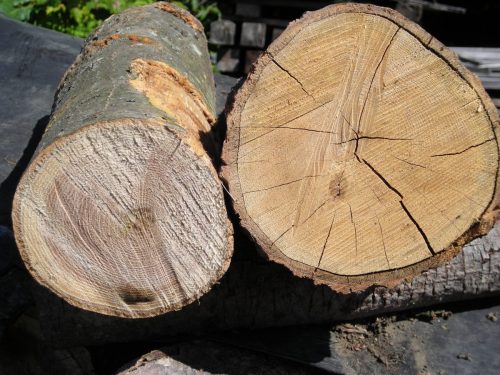PRO TIP
A collocation is a combination of two or more words that have a combined meaning.
One common collocation pattern is ADJECTIVE + NOUN
First floor
Waterproof membrane
Structural steel
Collocations are the secret to making your communication clear and simple!
Here’s an example:
The expression “concrete which has not finished curing yet” has excellent form and grammar. However, it is possible for the meaning to be unclear:
perhaps the concrete is not finished? (finished concrete has a different meaning)
“has not” could also be misunderstood. (try to avoid negative grammar if possible.)
Let’s use a collocation instead.
“uncured concrete” or “green concrete“
“its important to avoid driving on uncured concrete.”
“its important to avoid driving on green concrete.“
As you can see, using collocations is simpler, clearer, and avoids complicated grammar.
Construction Idiom
“Green concrete” refers to fresh concrete that is uncured or isn’t strong yet. It comes from the term “green lumber.” Green lumber is wood that has been freshly cut, and isn’t dry or ready to use yet.
read more here

These days “Green” means sustainable or eco-friendly. “Green concrete” can also mean concrete that is made from recycled stone or has other eco-friendly materials or properties.
read more here
CONCRETE COLLOCATIONS
Here’s a list of some of the more popular 2-word (Adjective+Noun) collocations about concrete.
Which do you already know? Which do you want to learn more about?
Reinforced concrete
Unreinforced concrete
Architectural concrete
Asphaltic concrete
Cellular concrete
Prestressed concrete
Precast concrete
Cellular concrete
Green concrete
Exposed concrete
Insulating concrete
Cured concrete
Air-entrained concrete
Porous concrete
Colored concrete
Test your knowledge!
Take a look at the questions below and try to answer them as best you can.
It might help to refer to a dictionary if you aren’t sure about some of the words.
Level 1- easier
1. Which 2 expressions describe the age of concrete?
Cellular concrete
Green concrete
Insulating concrete
Cured concrete
Unreinforced concrete
Cured concrete
Green concrete
‘green concrete’ (see above) means that it isn’t cured yet.
‘Cured concrete’ means that the concrete has reached its design strength (the strength that the structural engineer intended). This depends on type of concrete mix and other variables.
2. Which one type of concrete is most commonly used for roads?
Precast concrete
Architectural concrete
Asphaltic concrete
Porous concrete
Asphaltic concrete
Asphaltic concrete is a fancy word for “Asphalt”. Try to say “asphalt” instead because it’s more commonly understood.
3. Which one type of concrete is usually made in a factory?
Precast concrete
Architectural concrete
Asphaltic concrete
Porous concrete
Precast concrete
The latin prefix ‘pre’ means ‘before.’ Precast concrete was cast (made) BEFORE arriving at the construction site. Precast is often used where there are many similar shapes and sizes (repetition). It also allows for more quality control and a better finish.
Level 2- more difficult
4. Which two types of concrete are often used on roofs?
Cellular concrete
Cured concrete
Air-entrained concrete
Insulating concrete
Cellular concrete
Insulating concrete
Cellular concrete has lots of tiny air bubbles in it. It is commonly used on flat roofs to achieve a slope because it is light and has insulating properties.
Insulating concrete is similar to cellular concrete, except it uses perlite or lightweight foam aggregate.
5. Which one type of concrete allows water to pass through and is often used in landscaping?
Precast concrete
Architectural concrete
Asphaltic concrete
Porous concrete
Porous concrete
‘Porous’ describes a material that has ‘pores’. Pores are tiny spaces or voids in a material. A porous material allows water to pass through. Cotton, bread, loamy soil, and paper are all porous materials. Porous concrete is also called ‘pervious’ concrete’ or ‘permeable concrete’. It’s a popular way to reduce storm water runoff and helps save the planet.
Level 3- challenging
6. Which three expressions refer mainly to the APPEARANCE of concrete, or it’s visible properties (non- structural properties?)
Fresh concrete
Architectural concrete
Cellular concrete
Green concrete
Exposed concrete
Insulating concrete
Air-entrained concrete
Cured concrete
Colored concrete
Colored concrete
Architectural concrete
Exposed concrete
Colored concrete simply means it has an integral color (added to the mix), or has a color or stain added to the surface.
Architectural concrete has a very specific meaning in the specifications. Specifications will have requirements about appearance and finish for architectural concrete that differ from structural concrete. Structural concrete is often covered, hidden, or below the ground, while architectural concrete is exposed or visible and needs to look nice.
7. Which 4 types of concrete are NON-STRUCTURAL?
Reinforced concrete
Porous concrete
Prestressed concrete
Precast concrete
Insulating concrete
Cellular concrete
Air-entrained concrete
Unreinforced concrete
Porous concrete
Cellular concrete
Insulating concrete
Unreinforced concrete
According to the above lessons, you already know the meaning of the expressions, right? 🙂
Unreinforced concrete simply means that it doesn’t have any steel reinforcement (rebar, welded wire fabric, or post-tensioning)




